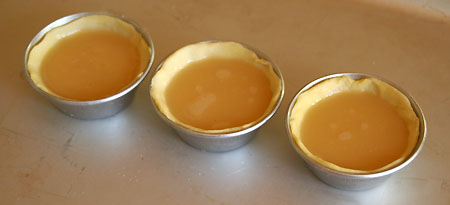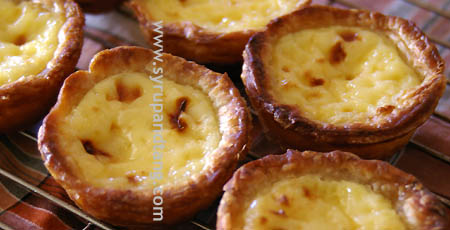
Eating Between the Lines has received a bit of media attention since its publication recently. I heard an interview with the author, Rebecca Huntley, on ABC Radio National and found the discussion interesting. I decided I should read the book, and then Neil over at At My Table wrote a great review that increased my interest further. You should read it.
I’ve now worked my way through the book and as you’ll read below, I wasn’t impressed.
Summary review
Eating Between the Lines claims to be “A different kind of food tour” and sociologist Rebecca Huntley certainly takes the readers on a journey. The book is a series of discreet chapters exploring aspects of food culture in Australia. From the subtitle of the book, “Food & Equality in Australia”, you might expect the focus to be on poverty, access to food, and perhaps the ability to cook. In fact, Huntley ranges over these themes and adds a sociopolitical agenda involving gender roles, racism, Slow Food and more. At times, the reader might feel that the author lacks much insight into deeper cultural and historical issues, leaving her argumentation a little popular-conscience rather than achieving insightful examination. Nonetheless, many interesting pieces of information come out of the interviews and stories and the footnotes are interesting. I found Eating Between the Lines very irritating, but it’s well written and designed to hit the right “how terrible” buttons with certain types of readers. Huntley might, however, have cast her net a bit too wide, because there are enough touches of sneering through the book that she might well offend even some of her target audience.
The structure of the book
The introduction paints a picture of inner-urban living with access to many food options in opposition to a decaying suburban environment with limited choice, most of it unhealthy. The author asks “how fair is Australia’s food culture?”. She then ventures into the contrast between a wealth of television chefs cooking fancy food and the supposed realities of eating/cooking in the normal population, using obesity, other writers’ commentary about British food, and some data about purchasing habits to get the ball rolling. Each of the next nine chapters covers an issue that Huntley feels is relevant: poverty and bad eating, child obesity, domestic cooking, men not cooking, single people and food, indigenous food and social disadvantage, ethnic food and racism, local food, ethical/rich-people food trends. Huntley concludes with an honestly ideological position about food, equality, empowerment, access and more.
The author
Rebecca Huntley is a social researcher, director of the Ipsos Mackay Report on social trends, and writes for Vogue Australia.
What is particularly good/interesting/new/special?
Eating Between the Lines serves as a window on food issues in Australia (and the rich world more generally) in the mid-2000s. That’s probably its greatest value. Its timing was good, though might have been even more interesting if written after consumers began to react to the global economic problems (that’s life).
The book is well written and stimulates readers to think, but because the author is quite definitely writing to an (at least loosely) pre-determined agenda, its value isn’t really as an objective assessment of issues unless you read between the lines of Huntley’s own perspective. The footnotes and bibliography are valuable inclusions which will give interested readers more paths to explore.
Huntley interprets “equality” more broadly than some readers might expect (extending it to food choices, urban sprawl driving out local agriculture, and more). This comes as a surprise as the book develops, and at times I really wondered how chapters were meant to relate to the overarching theme and the neighbouring chapters. Certainly, Huntley covers a range of interesting topics and illuminates many issues which are worth attention, sometimes very skillfully, but it’s difficult to work them all into a coherent thesis.
The author makes some interesting points, such as “If Jamie [Oliver] wants to encourage more family meals, why doesn’t he criticise those fathers who won’t shop, cook and clean for their families?”, raising the tricky issue of whether indigenous foods should be part of mainstream Australia’s diet, reminding us that food is about sustenance for many people, and highlighting the gulf between the dietary/cooking habits of the rich/empowered and other parts of the population.
What flaws/problems are there?
This book reeks of “I know what I think and I’ll paint you a picture that shows I’m right”. There are certainly many valuable points made and examples given. But Huntley seems to disrespect some of her subjects, sometimes moments after describing their plight or using their situation to prove a positive point.
On many occasions, Eating Between the Lines presents arguments based on nothing more than uninformed conjecture. There’s little serious data, but lots of social commentary to support more social commentary. Huntley is too comfortable generalising beyond her experience. Even the introduction shows a willingness to poo-poo something that doesn’t suit her: she provides a secondhand quote of London-based Australian reviewer Terry Durack saying “I grew up in a country where good food was available to all at a good price”. Huntley then writes “… I don’t believe we can be confident of the truth of Durack’s claim that good food is available to all Australians at a good price. Not all of us live in a lucky eating country. And the top-class food familiar to critics like Durack is not the kind of food the vast majority of Australians have the time, money or opportunity to enjoy.”
Excuse me for being blunt, but that’s just rank ignorance. If Huntley understood something about relative costs and quality of food historically (and now) between different rich-world countries she would hopefully have been more careful in dismissing Durack’s statement. The vast majority of Australians have had much better access to good, affordable basic produce than most people in many comparable countries for many decades (and Durack was writing about when he grew up). That doesn’t mean the same degree of access across the population (and has to exclude people living in extreme poverty and/or isolation) or that it applies to every type of produce in every place. But Huntley’s rejection of Durack’s slightly-too-broad statement is symptomatic of an impaired openness to different experience or possibilities.
Some readers will quickly tire of the author’s cynical depiction of men as kitchen chauvinists who can’t cook, won’t cook, or get treated with kid gloves when they do manage to step into the kitchen. I don’t for a moment deny that the vast majority of men don’t do much/any domestic cooking. It’s likely that it’s primarily because of established gender roles being perpetuated/enforced by various parties, including the men themselves. But Huntley dwells on men not cooking, or only learning to cook because of necessity, with limited consideration of other factors. I found it offensive personally, and on behalf of those men who do cook as part of their normal domestic roles. Huntley isn’t scared of moments of passing chauvinism about men, gay cooks, women in commercial kitchens, fat people, and more.
I could write much more on the flaws (I’ve bookmarked about 20 examples of particularly irritating stuff), but I think you get the idea. I’ll finish with one vaguely amusing example:
In the chapter called Basic Meals for the Ultra Rich, Huntley simultaneously derides people shopping at farmers’ markets (“Sucker prepared to spend a lot of money on not a lot of food.”) while admitting she’s one of them too. To prove how expensive it is she presents a short shopping list. This includes a bag of organic apples for A$5, half a kilo of organic coffee for $11.50 and two organic lamb shanks for $8. How strange that the coffee is actually cheap, the apples are only a little pricey (assuming it’s a kilo bag), and the lamb shanks are about the same for most Australians paying typical (non-market) silly prices ($3-4) for any shanks. She didn’t even get her “here’s proof” shopping list right. I’m sure many readers could have done better.
Target audience
Oh, this will appeal to all sorts of people riding the food-consciousness wave. Ironically, the ones who’ll probably like it most are the “Bobos” that Huntley describes and sneers so effectively at in the chapter mentioned above (though they might not like it if they make it to that chapter). It’s perhaps worth reading to make you think, but not necessarily because it’ll enlighten you.
As you can imagine, not everyone shares my perspective on this book. In addition to Neil’s review mentioned at the top of the review, you could also consider this and this.
ISBN 978-1-86395-263-7 – Black Inc.













